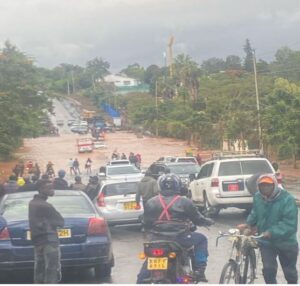Embracing the Arrival of the Rains

 As the rains make their long-awaited return to Kenya, it’s important to reflect on the historical significance of these downpours. In my youth, I vividly remember how Budalangi became the benchmark for all things related to flooding. Did you know that Kenya has endured three major floods in its history?
As the rains make their long-awaited return to Kenya, it’s important to reflect on the historical significance of these downpours. In my youth, I vividly remember how Budalangi became the benchmark for all things related to flooding. Did you know that Kenya has endured three major floods in its history?
The Uhuru Floods of 1961 wreaked unprecedented havoc on infrastructure, devastating dams and homesteads. The areas most affected included the Athi, Tana River, Lake Victoria, and Lamu basins.
The El Nino Floods of 1997/1998 caused the loss of human life and livestock, leaving a trail of destruction in their wake. These floods were accompanied by increased soil erosion and had a detrimental impact on water intake facilities.
The Budalangi Floods of April/May 2003 stand out as a catastrophic event. The entire Budalangi region was submerged, resulting in the mass displacement of people and property, as well as the flooding of the Nyando River downstream.
After enduring prolonged periods of drought in 2022 and 2023, this year’s heavy rainfall has proven to be a blessing in disguise. Or has it? For most farmers, these rains are cause for rejoicing as they offer an opportunity to increase the food supply. In Mataara, a small village in Kiambu County, a determined farmer is making the most of this opportunity, ensuring that the urbanites do not go to bed hungry.
However, for urban dwellers, at least a third of them have been wishing the rains away due to the disruptions they bring to their daily lives. Heavy rains have led to major flooding, severely impacting mobility. Cars are being submerged, homes are being flooded, and sewage systems are overwhelmed, potentially contaminating piped water in households, restaurants, supermarkets, and schools.
Media outlets have even given South C, the famous estate, the nickname “South ‘Sea,’” as it is consistently affected by even the slightest amount of rainfall. It is crucial that we acknowledge the reasons behind these destructive floods, beyond simply attributing them to climate change and global warming. Substandard planning and a lack of maintenance of urban infrastructure are most to blame for the extent of the devastation.
Drowning remains the leading cause of death during times of flooding. Additionally, waterborne diseases, such as cholera, stomach upsets, and skin rashes, become alarmingly common during heavy rains. Flash floods have also resulted in accidents, with reports of luxury vehicles in Dubai finding themselves swimming in storm waters.

As the clouds gather, it is essential that we prioritise our safety, taking necessary precautions to protect ourselves from the dangers posed by floods. For those heading to work, staying dry and safe should be a priority, as being rained on can lead to respiratory illnesses and recurring flu, which are highly communicable. Drivers must refrain from navigating through running waters, as doing so endangers their lives, the lives of passengers, and their vehicles.
Employers have the opportunity to assist their employees by allowing them to work from home, reducing the need for unnecessary travel that may pose greater risks to those driving or using public transportation. Travelling during heavy rains can be inconvenient, and there are also public health concerns when people encounter contaminated water.
Remember, staying informed about weather updates and following the official guidelines provided by the Kenya Meteorological Department can greatly assist in minimising the impact of heavy rains and floods. Let us embrace the arrival of the rains cautiously, ensuring our safety and well-being amidst the beauty and challenges they bring.

